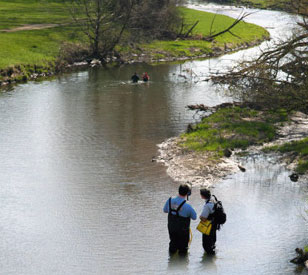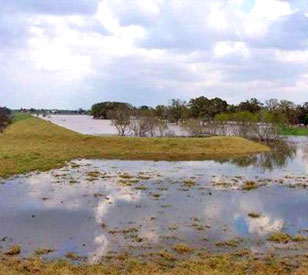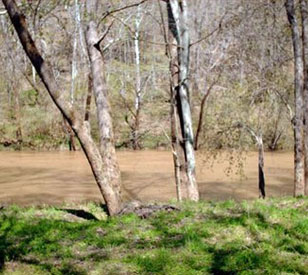Tide Gauges

Tide gauges measure tidal fluctuations, instantaneous water depths and long-term water depth averages in coastal areas. Although tide gauges have been in use for many decades, advances in sensor technology have increased both the available options and measurement accuracy. Automated monitoring systems can deliver the data needed to analyze long-term trends and develop both near and long-term forecasts.
Tide Gauge Measurements

Typical Tide Gauge System
Tide gauge systems may integrate various sensor types for measurement of mean water levels, wave heights and other factors like weather conditions. They are mounted on piers, docks or purpose-built structures and incorporate data logging systems with wireless, remote telemetry.
While systems have historically utilized mechanical float sensors or sounding tubes, NexSens tide gauge systems incorporate modern sensor technology such as the VEGA VEGAPULS C 23 radar level sensor, a non-contact water level instrument that requires little to no maintenance. Sensors are connected to the X3 environmental data logger, the central component of NexSens automated tide gauge stations. The X3 transmits real-time sensor data wirelessly, most commonly via cellular telemetry, but Iridium satellite telemetry is available for stations in remote areas with little connectivity.
Multiple sensor ports on the X3 allow for simultaneous connection of several sensors. A station could, for example, incorporate a pressure transducer like the Seametrics PT12 for redundant water level measurement. Other compatible sensors include meteorological sensors for measurement of weather factors like air temperature, barometric pressure, and wind speed and direction, ADCP current meters and profilers, and multi-parameter water quality sondes.
Flexible mounting options for the X3 simplify installation on structures. Power is typically supplied with SP-series solar power packs or fixed adapter if AC power is available. Telemetered data is received on the WQData LIVE web datacenter platform. WQData LIVE has a suite of data management tools and sends alerts via email or SMS text message when defined thresholds are exceeded.
Contact a NexSens Applications Engineer today to discuss your tide gauge application.

Case Studies
Buck Creek Dam Removal & Restoration
Located in southwest Ohio, Buck Creek and its tributary, Beaver Creek, run through a series of low-head dams in the city of Springfield. Historically, the four dams diverted water for mills and local industry and protected utilities along a continuous four-mile reach. However, they’ve also interfered with the water’s natural flow and inhibited stream health. The Springfield Conservancy District and Friends of the Buck Creek Recreation Corridor are working to restore a more natural flow to the creek while maintaining the benefits provided by the dams.
Read MoreFlood Alert System
In an effort to catch and hold floodwaters in the Plum Creek watershed in Lockhart, Texas, a system of lakes, ponds, and spillways was built beginning in the 1950s. The system allows water to be released at a controlled rate, minimizing damage from heavy rains. The Plum Creek Conservation District monitors, maintains, and improves this system to ensure it works properly, maintaining 28 flood control structures and managing underground water resources in parts of both Hays and Caldwell counties.
Read MoreGreen River Water Quality Network
Spread across 671 acres of land in Hart County, Kentucky, the Upper Green River Biological Preserve is a diverse habitat consisting of bottomlands, uplands, barrens, caves, limestone glades, and the Green River itself. The preserve was acquired through the Kentucky Heritage Land Conservation Fund and formally established by Western Kentucky University in early 2004.
Read More







